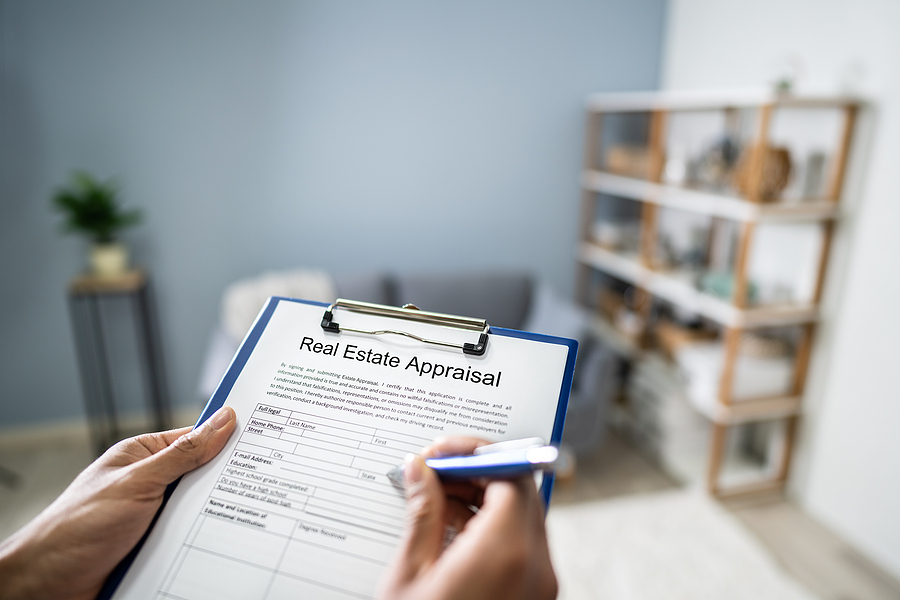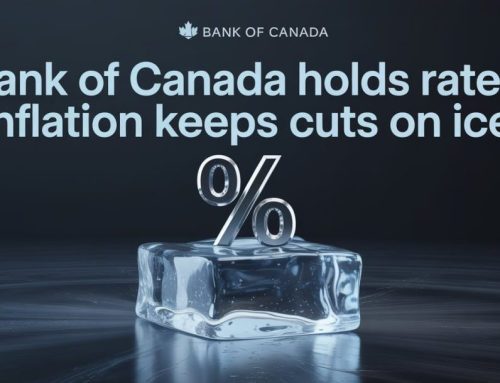You’re purchasing a new home and all your conditions for your mortgage approval have been satisfied. That is… all except for the appraisal. If the appraisal were to come in lower than the purchase price, then this could present issues with your mortgage, regardless of how solid your qualification is on paper.
Let’s take a look at a few different scenarios and how a low appraisal might affect a borrower.
Example 1
Purchase price: $900,000
Down payment: $180,000 (20%)
Mortgage amount: $720,000
Appraised value: $880,000
In this example, the 20% down payment would be calculated on the lower appraised value of $880,000, which would be $176,000. $4,000 lower than if the home appraised for the full $900,000. The borrower would then be required to cover the difference between the appraised value and the purchase price, which would be an additional $20,000.
The total down payment required to complete this purchase would become $196,000, or $16,000 higher than it would have been if the home appraised for the purchase price.
The mortgage amount would then drop to $706,000, which would be the maximum amount without dropping the down payment below 20%.
What if the borrower cannot increase their down payment?
If the borrower does not have the additional funds, then they may need to consider converting to an insured mortgage. Anything below a 20% down payment will require mortgage default insurance issued by one of the three mortgage insurers (CMHC, Genworth or Canada Guaranty).
While this may help the borrower to get a lower mortgage rate, it wouldn’t be enough of a difference to offset the cost of the insurance premium, resulting in a significantly higher cost of borrowing.
A bigger problem however could be with qualification. There are many situations where a purchaser will require a 30 year amortization to qualify for the mortgage. A longer amortization means a lower payment, resulting in a higher qualifying amount.
With an insured mortgage however, the maximum amortization is only 25 years. If someone was in a position where they did not have the additional funds to cover the additional down payment required, and if they did not qualify with a 25 year amortization, then they would not be able to complete their purchase unfortunately.
Example 2
Purchase price: $500,000
Down payment: $25,000 (5%)
Mortgage amount: $475,000 (not including the insurance premium)
Appraised value: $490,000
In this example, the borrower is purchasing with minimum down payment where mortgage default insurance is required. In 99% of these situations, an appraisal is not needed as the value is guaranteed for the lender by the insurer. While the insurer will accept the value in the vast majority of high ratio (insured) purchases, this is not always the case.
If the insurer has concerns about the value of the property, they will order an appraisal. If the appraisal were to come in low, the same rules would apply as described above. If the borrower did not have the additional funds to come up with the difference between the purchase price and the appraised value, then they would not be able to complete the purchase.
Example 3
Purchase price: $750,000
Down payment: $262,500 (35%)
Mortgage amount: $487,500
Appraised value: $720,000
In this example, the borrower has a down payment far greater than the 20% minimum required to avoid mortgage default insurance. If the appraisal were to come in $30,000 below the purchase price, then this would not affect the borrowers qualifying ability. They already have enough down payment to cover the shortfall, so no additional down payment would be required.
Where this can end up being an issue is mortgage rate, as there are often lower rates available with a 35% or greater down payment. If the appraised value on this purchase were to come in for $720,000, then the 35% minimum down payment required to remain in the same rate category would be based on the lower appraised value of $720,000. Let me explain further.
If the buyer were to keep their down payment the same, then the lender would need to deduct $30,000 from it to cover the difference between the purchase price and the appraised value, which would leave $232,500. This is the amount the lender would consider your down payment as far as pricing is concerned, which is 32.29% of the appraised value of $720,000. This may result in the borrower being offered a slightly higher rate on their mortgage. Again, this is not always the case, but it’s not uncommon for lower rates to be offered with 35% or greater down payment.
Note that this only applies when the purchase price is under $1 million and the amortization does not exceed 25 years. If the purchase price was over $1 million, or if the amortization is 30 years, then the lower appraisal would not have an impact on the mortgage rate, nor would the borrower be required to come up with any additional down payment. The biggest issue in this case would be that the client is likely overpaying for the property by $100,000, but it would not have any impact on their mortgage qualification.
Other Options For Handling Low Appraisal
Challenging an appraisal
The first thing we’ll do if an appraisal comes in low is review the report in detail to ensure that we agree with it. Sometimes, errors can be made, or certain aspects may have been overlooked by the appraiser. If we see a potential discrepancy, we can challenge the value with the appraiser to see if any upward adjustments can be made. This can be hit or miss. If the appraiser agrees that an error was made, or that there was an oversight, they would generally issue an updated report with a revised value.
Ordering a second appraisal
Appraisals are nothing more than the appraiser’s opinion of value. Just as mortgage professionals follow a formula to determine how much you will qualify for, appraisers follow a formula for determining value on a property. For this reason, it would not be uncommon for two appraisals to come in for a similar value, but this is not always the case.
If they appraiser is firm on their value, you always have the option of ordering a second appraisal (which would be at your expense). While it’s possible that the second appraiser could issue a report for a higher value, you run the risk of the appraisal coming in lower than the first one. The lender will then be inclined to use the lower of the two appraisals. You may have just paid for a 2nd appraisal, only to have to come up with an even greater down payment. We can always press for an exception to get the lender to use the higher of the two, but this is not something that can be guaranteed.
How Often Do Appraisals Come in Low?
I would say that 99% of the time, appraisals will come in at the purchase price. However, it can have a lot to do with market conditions. If we’re in a hot real estate market, it’s less likely that the appraisal would come in low, assuming you didn’t put in a bully offer (an offer that is significantly higher than market value).
In a declining market however, appraisers may be a bit more cautious when determining the value, and chances of a low appraisal are greater. In most cases, the appraiser will make every effort to come in at the purchase price. While there are cases where the appraisal could come in higher, this is fairly rare. The appraiser generally does not want to take on more risk that they need to, so they don’t value the property for any higher than what is needed to complete the purchase.
The Paul Meredith Team will be donating $250 to local food banks for every mortgage we fund from April 30-July 31st, 2020.
With well over one million Canadians now out of work, the food banks need our help more than ever.
For this period in 2019, we closed 93 mortgages, which would have meant a donation of $23,250! We want to exceed this number this year! Regardless of whether you are purchasing, refinancing, or have a mortgage coming up for renewal, all closed mortgages closed through the Paul Meredith Team will add to the total donated.








Like!! Thank you for publishing this awesome article.
Glad you liked it, thanks for the comment!